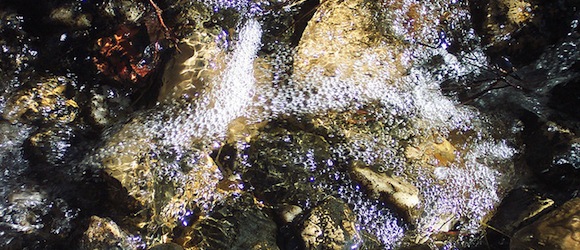Scientist Ruth Patrick, Ecological Pioneer, Dies at 105
so long and thanks for all the fish

Last week the Academy of Natural Sciences of Drexel University announced that Doctor Ruth Patrick, a scientist long associated with their program, died, after a career that laid the groundwork for the study of pollution’s effects on freshwater ecosystems.
Colleagues at Harvard and Yale have referred to her as “a pioneer environmental activist,” who “was worried about and addressing water pollution before the rest of us even thought of focusing on it.” Dr. Patrick earned her Ph.D. in 1934, no easy feat for a woman at the time. In 1937 she was able to secure the unpaid position of assistant curator of microscopy at the AoNS at Drexel. It would take eight years before she’d be given a salary, two years later she would establish a new department, and a year after that she would successfully prove that studying the population of microscopic diatoms in a body of water could be used to measure its how polluted it was and by what, creating a system of measurement now used worldwide.
From the New York Times:
Her team, including a chemist, a bacteriologist, and animal and plant experts, determined the types of pollutants in sections of the river and then identified the plant and animal species. Dr. Patrick found that some species of diatoms thrived in water that was heavily contaminated with organic material like human sewage, while other flourished among chemical pollution.
Refining this finding, she was able to examine a sample of stream water under a microscope, determine the type and numbers of diatoms present, and tell what kind of pollution was present and how severe it was.
To check the number and types of diatoms, Dr. Patrick invented a device called the diatometer, a plastic box containing microscope slides that when strategically placed in a stream collects the maximum number of the organisms.
Dr. Patrick would go on to advise two presidents on environmental policy (Johnson and Reagan), serve on the board of the Pennsylvania Power and Light Company, be elected to the National Academy of Sciences, and receive both the National Medal of Science and the $150,000 John and Alice Tyler Ecology Award, the world’s richest prize for scientific achievement at the time she was awarded it. She was also the first woman to serve on the DuPont Company board of directors.
In 2004, she told an interviewer “I collected everything [as a child]: worms, mushrooms, plants, rocks. I remember the feeling I got when my father would roll back the top of his big desk in the library and roll out the microscope. He would make slides with drops of the water samples we had collected, and I would climb up on his knee and peer in. It was miraculous, looking through a window at a whole other world.”
May her life inspire other young women to take a good look into the scientific world. Our usual obituary category “so long and thanks for all the fish” is uncannily appropriate.
(story via The New York Times, top pic via Flickr.)
Are you following The Mary Sue on Twitter, Facebook, Tumblr, Pinterest, & Google +?
Have a tip we should know? tips@themarysue.com